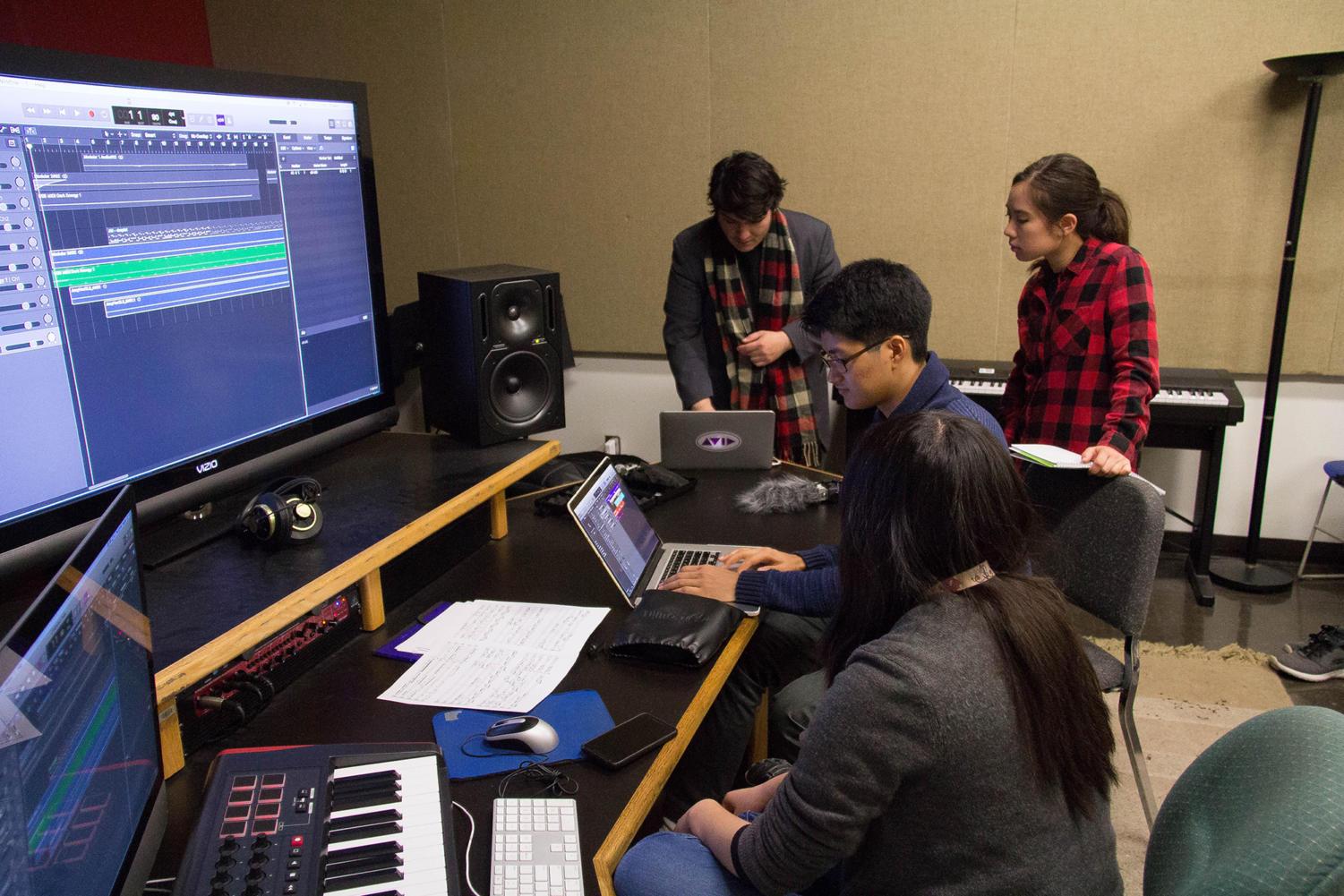In an industry where knowing someone is half of the battle, four Cal State Long Beach students are looking to make a name for themselves in the world of audio.
Music composition majors Amy Hori, Daniel Kim, Kei Matsuo and Daniel Ramos will be launching a new store this week on their website, www.soundbird.net, selling audio clips for game designers and video producers to create content.
The idea started back in February when the Soundbird team realized all of their work could take advantage of this shift toward libraries, or collections of data that can be used upon purchase. The site already offers a number of contracting options where both designers and mixers can ask the group to create specific music or sounds for their projects, including overall sound design, recording dialogue and music. The service will also offer discounts for university students.
“It’s a one-stop service that does everything,” Ramos said. “Nowadays the industry has become very reliant on libraries.”
The quartet met through the Video Game Development Association, where they’ve worked on published games such as “Voodoo Cheval” and “Horizon’s Pull,” as well as a number of others that are in the works. The four have altogether produced audio content for almost 30 games that are either released or in development. Their latest project, “Banish,” is set to release Dec. 1 on Google Play for Android devices as well as personal computers.
“Banish” will have around 40 minutes of unique sounds and music, but with a special touch from Hori, Kim and Ramos. Using the audio engine FMOD, a series of five to 30-second musical “loops” are strung together in different ways. Ramos calls it a generative music system.
“We designed all of these loops to have similar qualities to each other,” Ramos said. “So they’re able to blend pretty well together when you play one after the other randomly.”
Audio is something gamers and moviegoers alike often take for granted. Kim says producing 30 seconds of audio can take up to three hours to make in one go, and usually takes multiple attempts to get a finished product.
“The bigger developers are going to want more revisions,” Kim said about getting a clip just right. “Sometimes sound designers have to go through 50 revisions or more, and we kind of have to get used to that.”
A lot of the time, the professional developers don’t have much experience in the world of sound. Translating the ideas in their head to a real noise isn’t always easy.
“Sometimes people will say things like, ‘that chair just sounds very long,’” Ramos said with a laugh. “Or [they’re] asking you to make something sound more ‘green.’ But it’s really our job to find out.”
That interpretation can be a lot easier when the engineers and designers get on the same creative page.
“You really want to understand the content of the game,” Hori explained. “That’s how you’re going to click with your artist and your narrative.”
Aside from the temporary frustrations, the four love the work and get to have a lot of fun doing it.
“For our last project we had an entire chainmail suit of armor,” Kim said, laughing as he recalls Ramos, dressed in the armor, being wailed on with various tools and appliances to create sounds for their work. “You can get really interesting sounds if you experiment enough.”
The work can be tough, but at the end of the day the group gets along and enjoys the work.
“These guys are okay,” Hori said with a sarcastic smirk.
When not beating each other with hammers for that golden clip, the soundbird team gets along well and looks forward to launching the store together.




